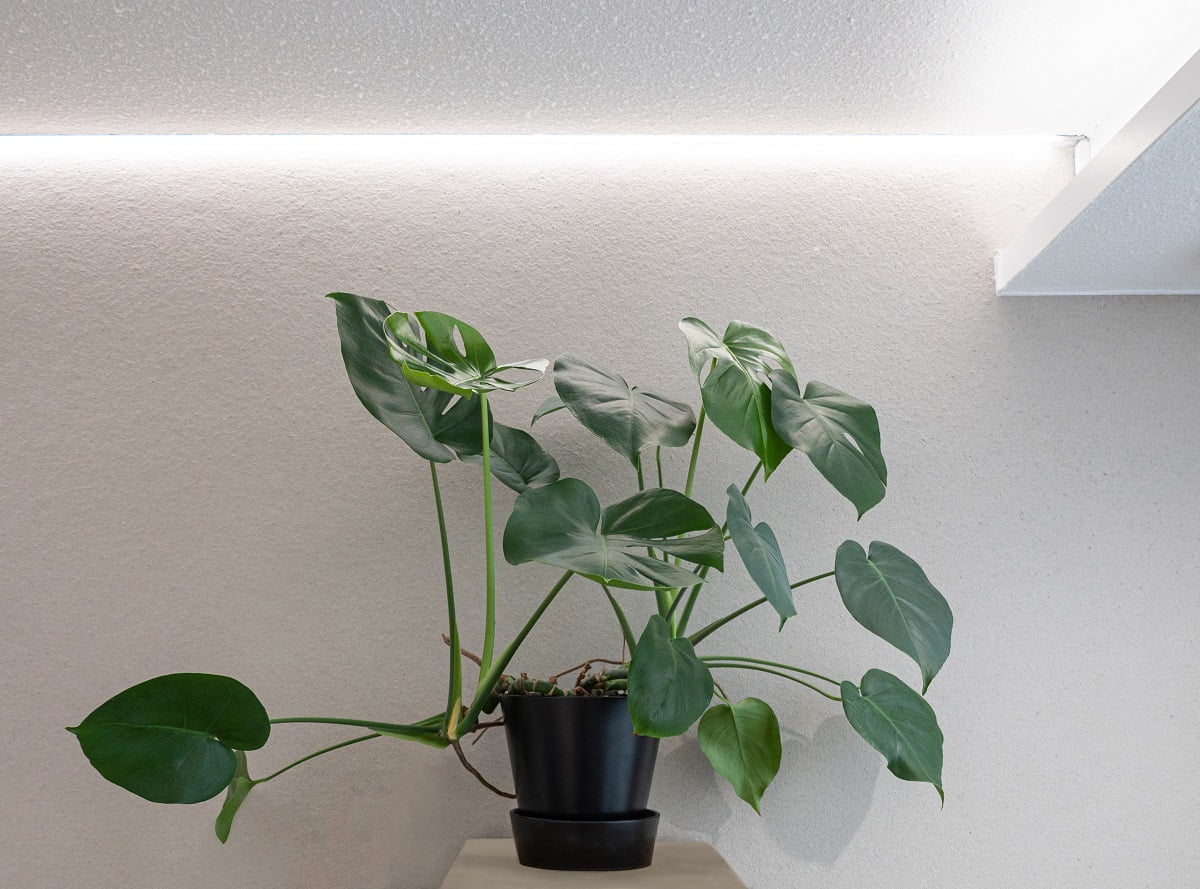Plants need light and water. With the help of led solar lighting. In Finland, light is usually less naturally available than either of these two, so attention must be paid to the lighting of plants. In this article, we present to the plant enthusiast the LED plant light we designed at LedPaja.
Led plant lighting for plant well-being
The LED strip used was a 14W/m 74cm Solo CCT strip with a high colour rendering index (CRI) and temperature control. The advantage of a colour temperature adjustable strip is that it provides cold daylight at around 6500K, which plants like. The tape was attached to a white, low profile surface. For the light stand, an IKEA Dulig waffle deck was purchased, from which the centre pole was completely removed at the bottom. This way the rack can be easily taken to e.g. on a shelf, or place larger pots under a light.
A metre of SOLO CCT 14,4 W/m LED strip gives 1580 lumens, so 74cm in the luminaire gives about 1170 lumens. The clear, optical cover, which directs the light to a tight 60 opening angle, gives more direct light downwards. Measured on site with a mobile phone’s lux meter, plants 50cm away receive approx. 2000 lux, and lower down at a distance of more than one metre at around 800 lux. So a light of this size will at least work as a wintering light / supplementary light.
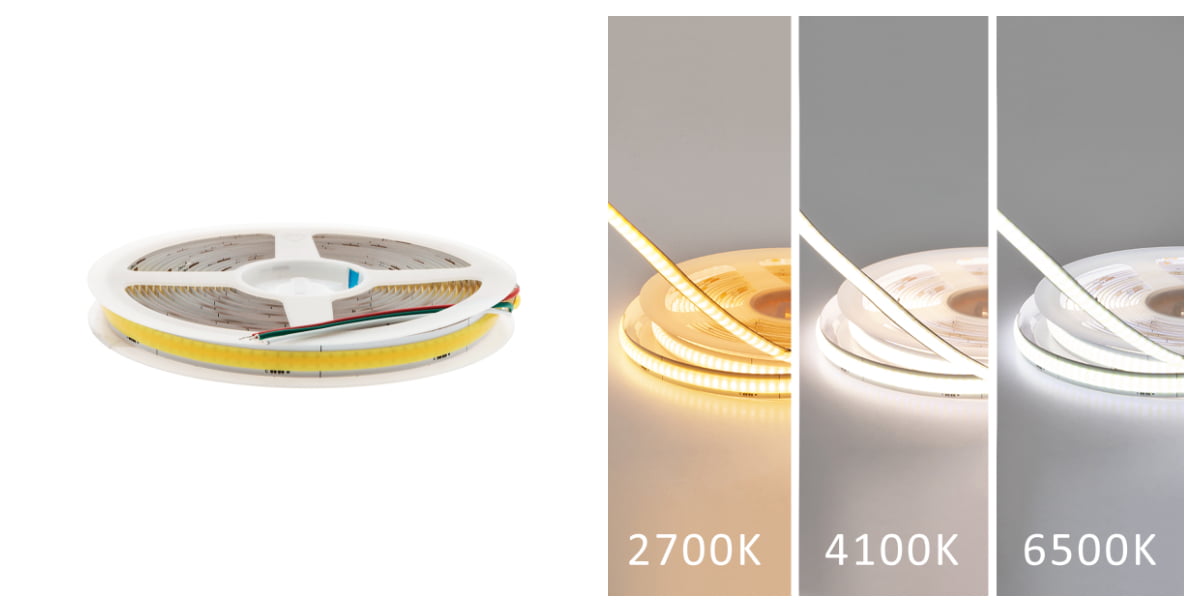
When the light has more distance to the plants, as seen in the LED plant lighting picture below, it works well as a wintering light or supplementary light, with lux at a distance of about 800 metres. For the seedlings in the picture, there would be too little light to grow. When the seedlings are about 50 cm away from the light, the amount of light in the dim room is about 2000 lux, which was enough to get the seedling stage up to the third pair of leaves.
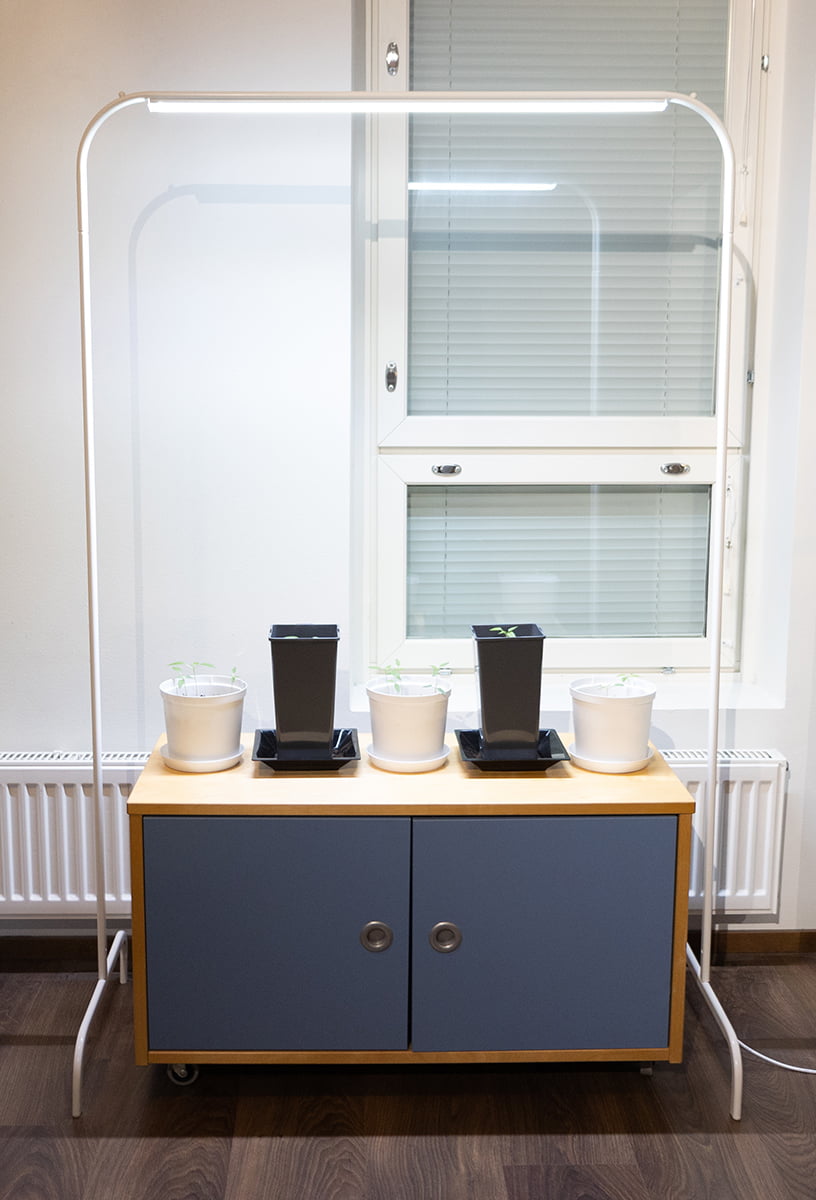
Plant light made with LedPaja
Once the stand for the light was decided, LedPaja made a suitable light for it. The steps in a nutshell were as follows:
- Selecting the Led aluminium profile and fitting the length to the frame.
- Fixing the profile to the frame.
- Cutting the Led strip to the appropriate length.
- Measuring the connecting wire to the transformer and soldering it to the LED strip.
- Attaching the Led strip to the profile and inserting the wire into the frame.
- Connecting the wires to the transformer.
- Pairing the wireless control between the controller and the transformer.
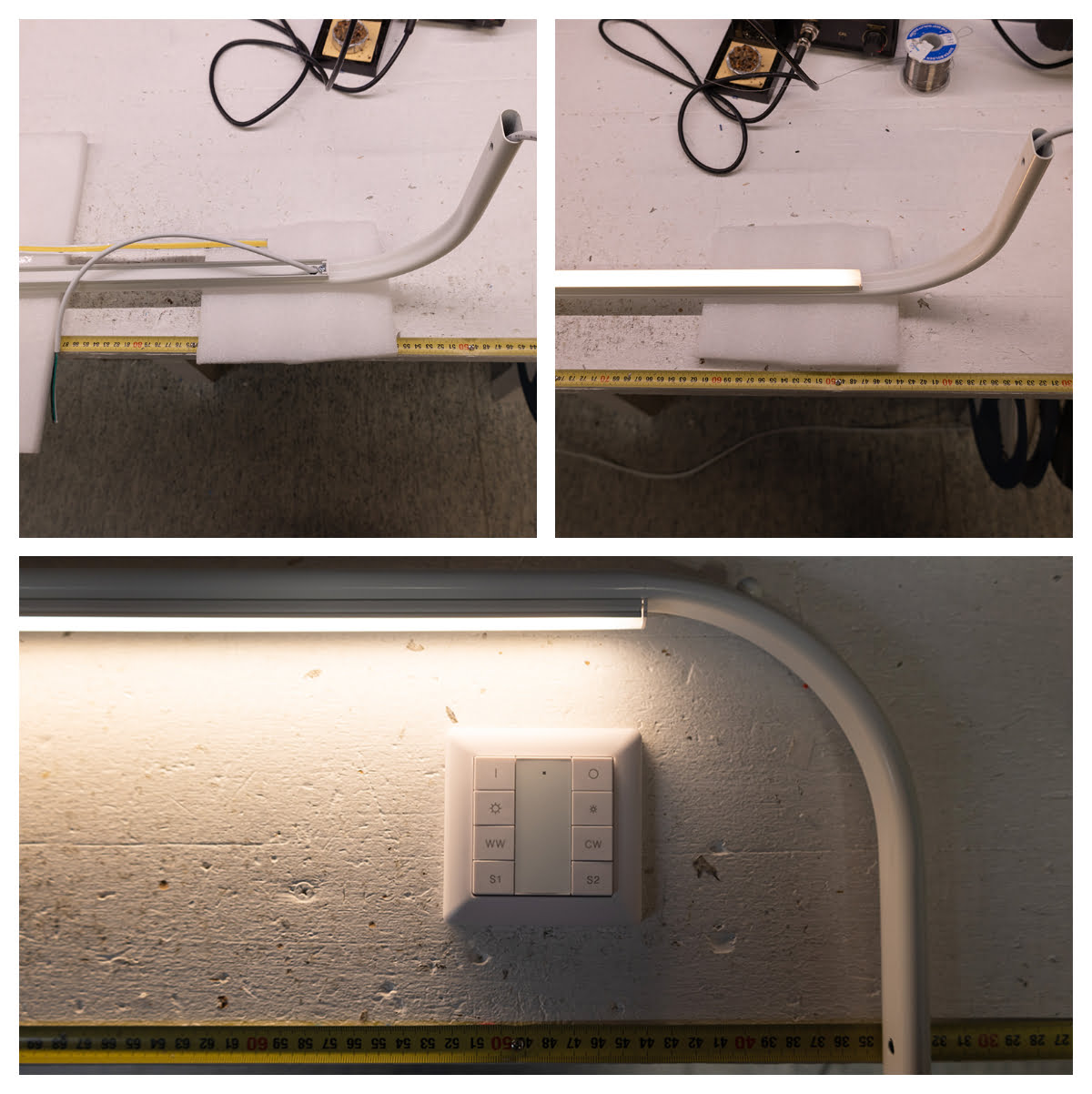
The finished LED plant lighting frame has a 74 cm long 14. w/m SOLO CCT LED strip, with the plant shelf in the middle. The good thing about the frame is that it is portable and lightweight. The colour temperature of the light can be easily adjusted to the desired Kelvin level with a wireless controller. For example, during the day you can give your plants a cool white daylight, and in the evening when you get home, you can set the light to a warmer white, evening mood. The controller is a Zigbee controller, which was paired with a Zigbee transformer 24V 30W. If you want to time and program the light, you also need a bridge or hub, such as Philips Hue or Samsung Smart Things.
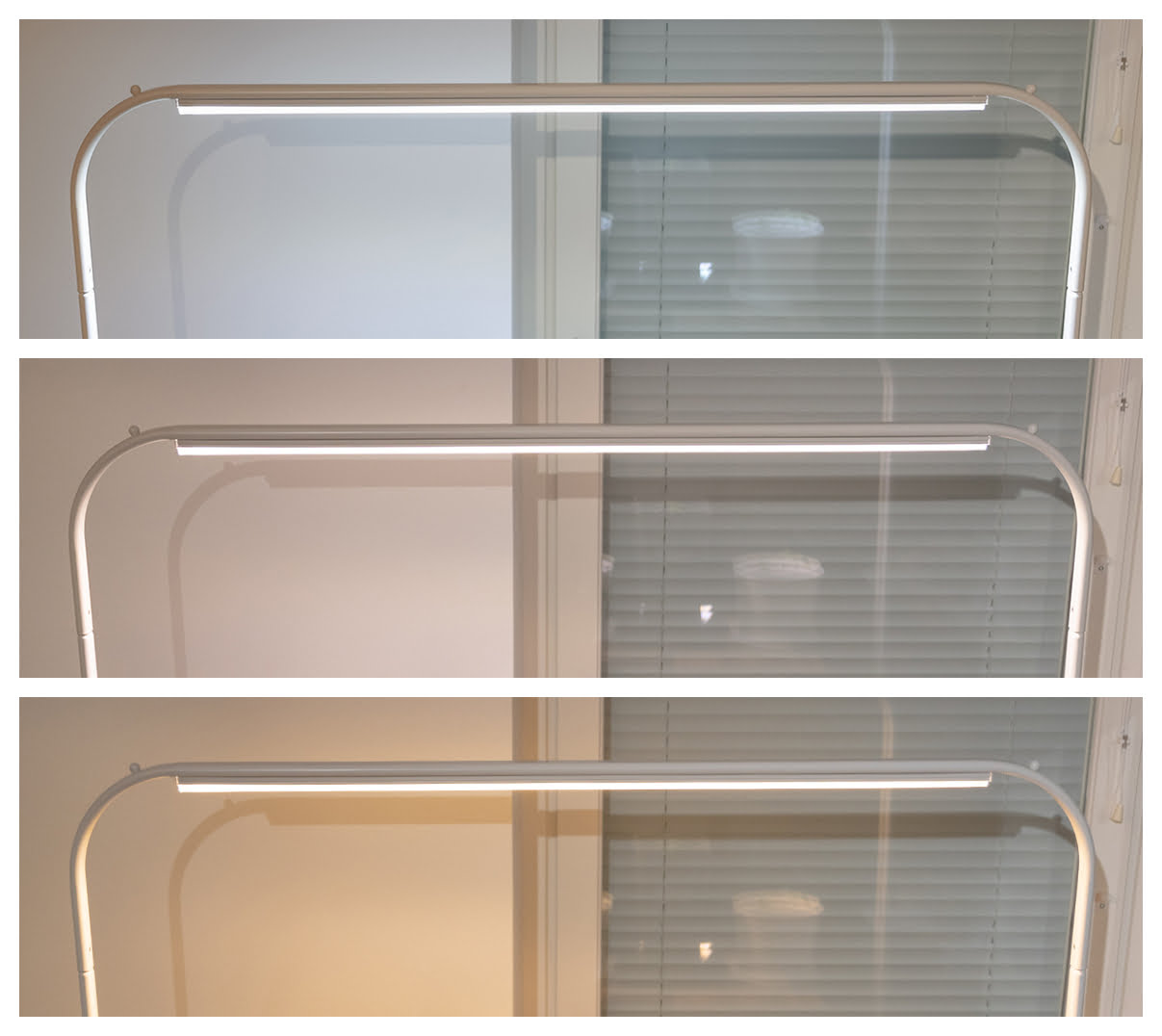
The profile used was therefore a white low profile surface profile, which comes standard with a thin opal plastic cover. For this purpose, a plastic cover sealing the opening angle to 60 degrees was replaced. With the basic deck, the opening angle is about 110 degrees, which means the beam is much wider. An alternative is to use a slightly deeper profile 16×18 white surface profile, which in combination with the optical cover gives a light opening angle of about 10 degrees.
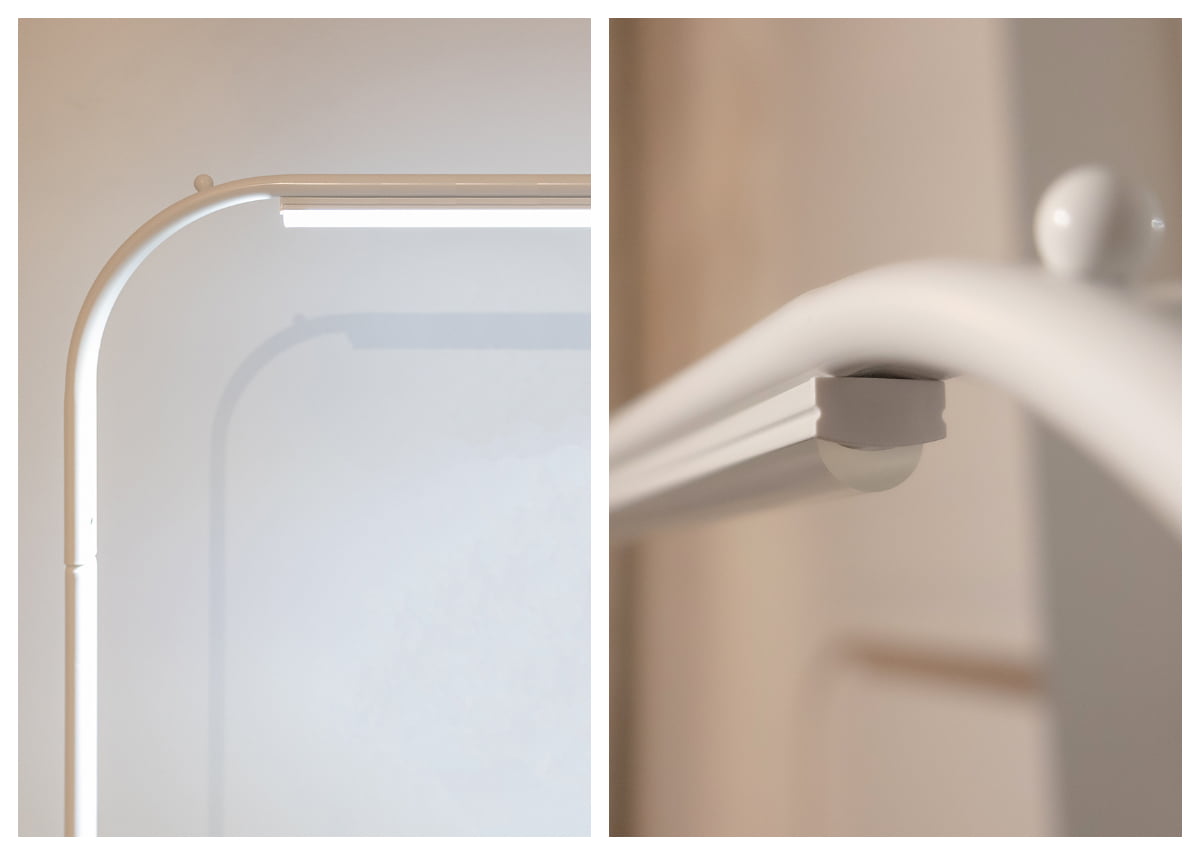
Amount of light and suitability for different plants
The amount of light can be measured with a lux meter if you want to know exactly how much light is being produced by luminaires in a given space, and at different distances from plants. Common light levels collected from various sources include:
- 600 – 3000 lux (6-30W/m2) – Daylight outdoors in midwinter
- 800 – 1500 lux (8-15W/m2) – Light requirement for green plants that require the least light (peony, tuna tongue)
- 500 – 1000 lux (5-10W/m2) – Light compensation point for photoplants (overwintering rate, plant not growing)
- 100 – 500 lux (1-5W/m2) – Light compensation point for shade plants (wintering rate, plant not growing)
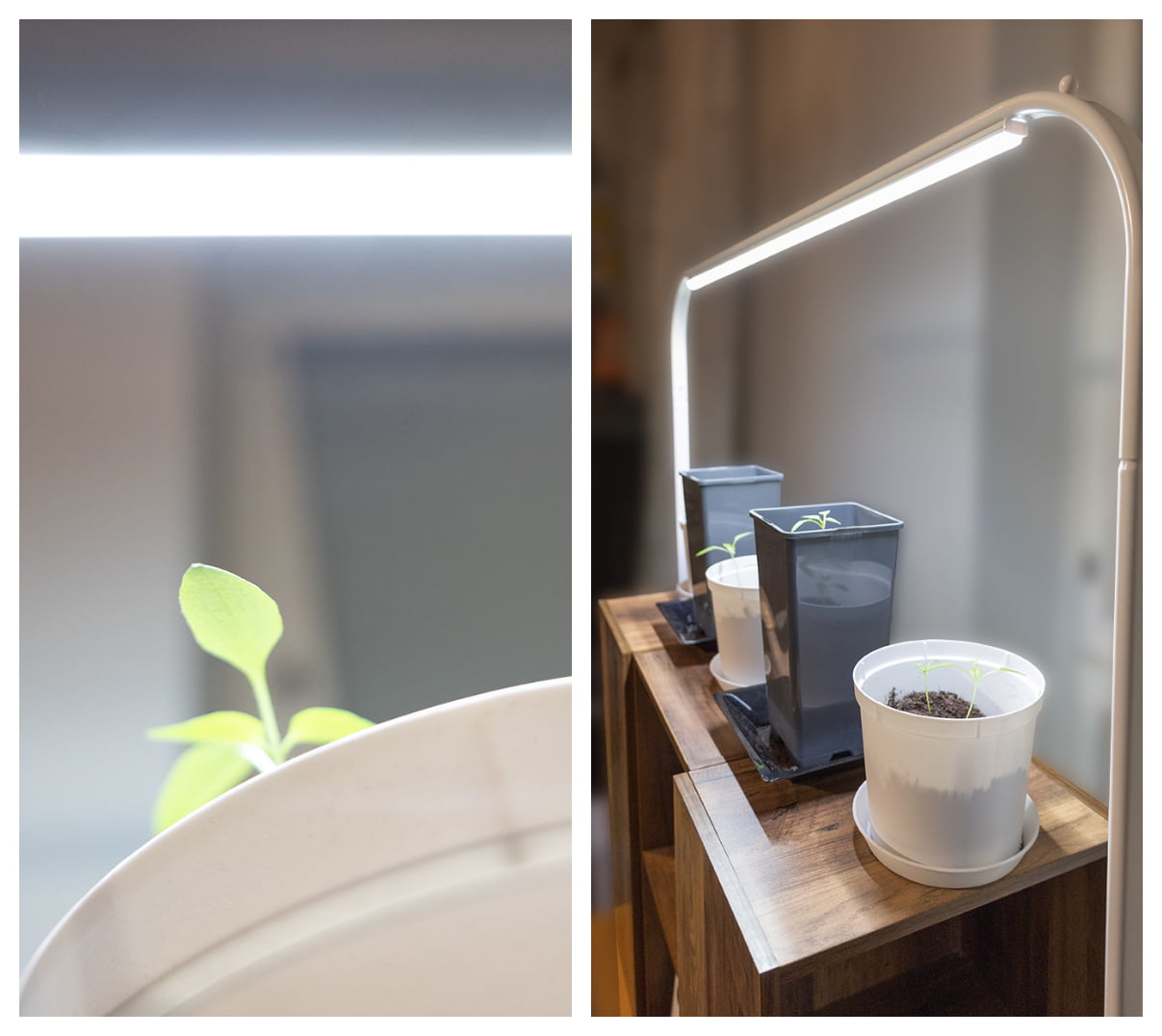
Plants that need shade and semi-shade benefit from additional lighting, which can be provided by so-called “shade”. as part of the general lighting in your home. For example, a 22 W/m colour temperature adjustable LED strip from the roofline or a 12 W directional, narrow beam Kolo spot will always provide daylight for plants, and in the evening the light can be adjusted to a neutral or warm shade more suitable for lounging. Under the Kolo spot, at a distance of 60 cm, the plant receives about 12 000 lux of light, which in fact keeps the plant in growth mode all winter.
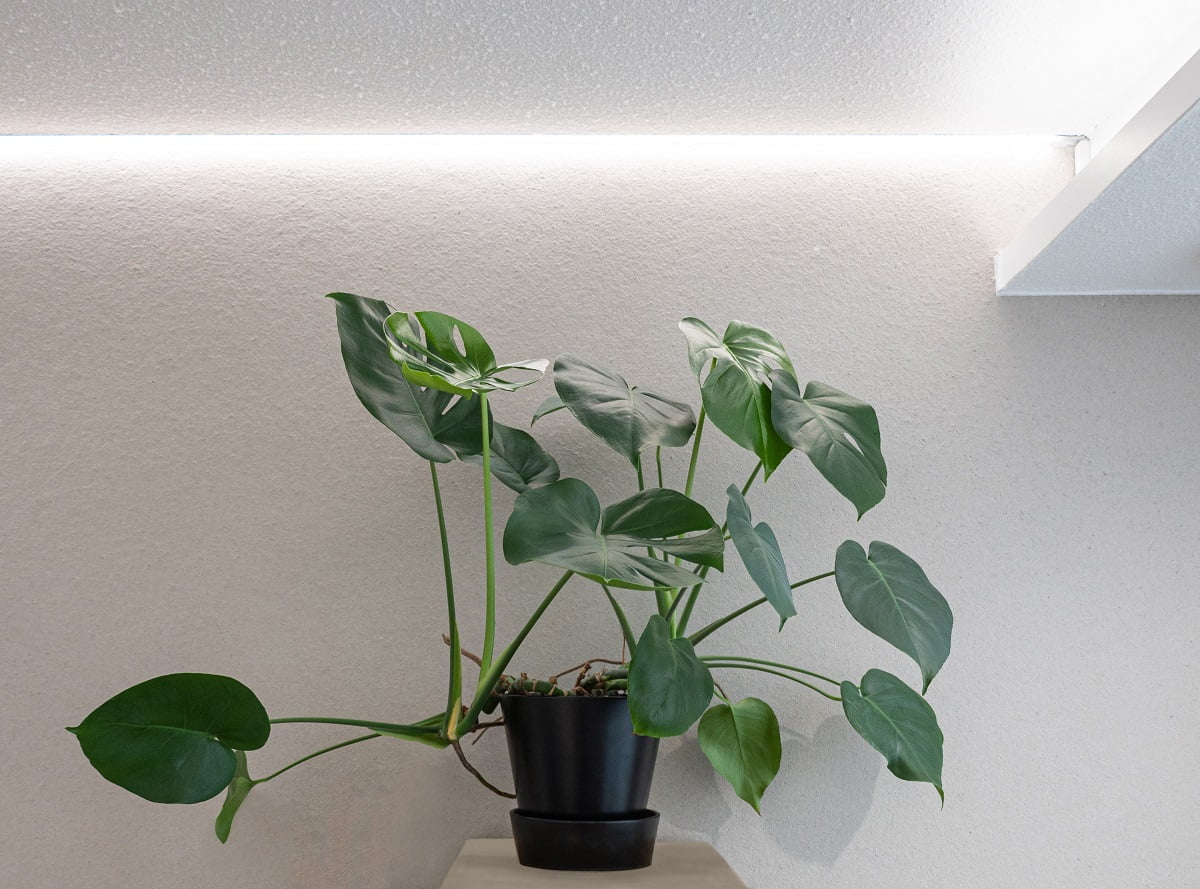
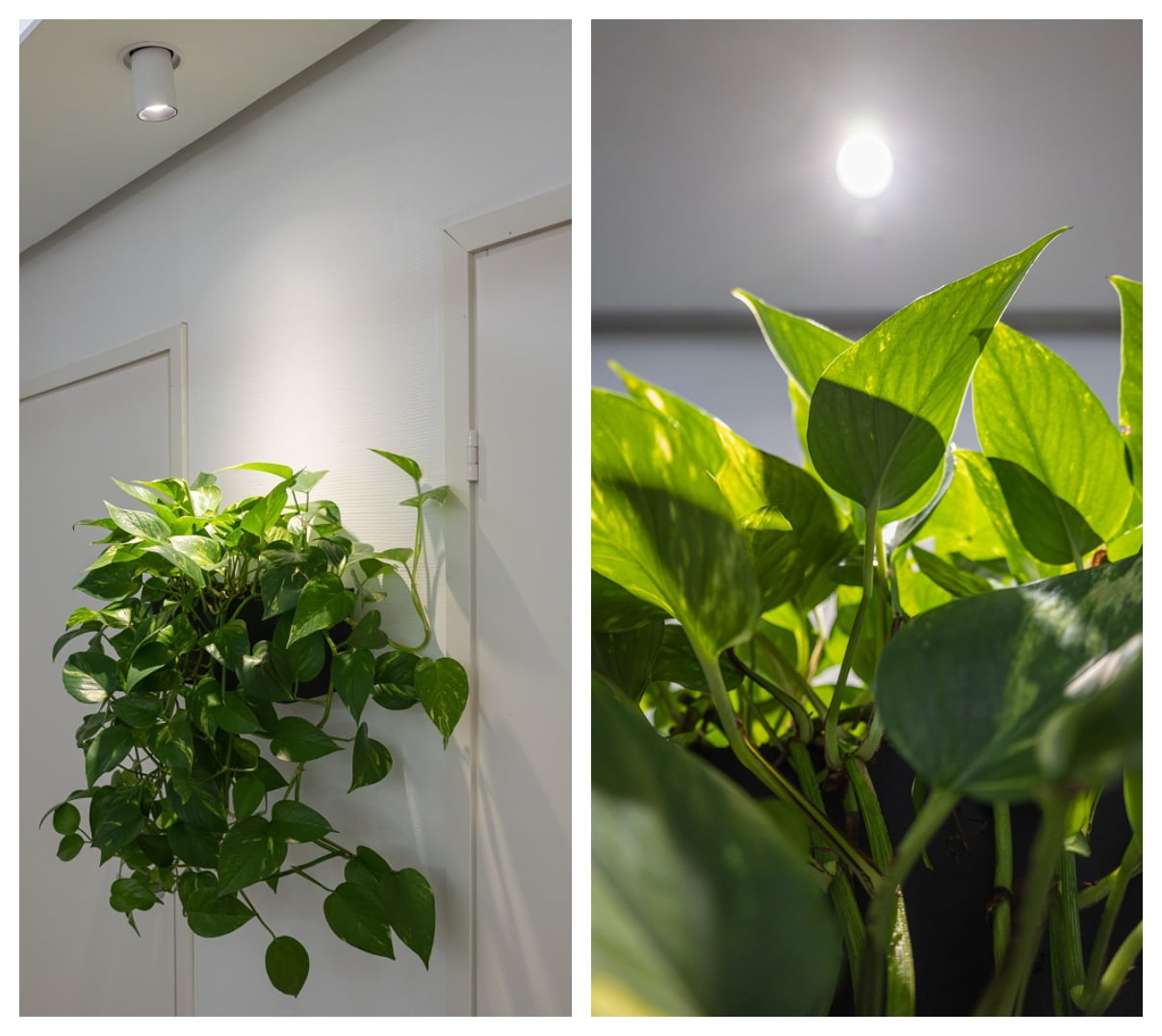
In summary, good quality LED plant lighting will in any case increase the well-being of plants, as well as people, during the dark months, and improve the comfort of the home. Read more about the light plants need in our earlier, more technical article on Led bulbs for plant well-being.
Read more about our LedPaja service if you are interested in custom-made LED strip lighting, or our affordable lighting design, where we take into account all your lighting needs!

